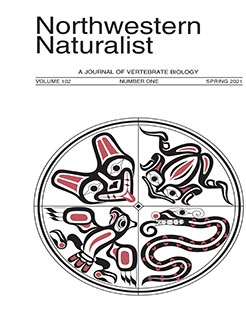North American Porcupines (Erethizon dorsatum) have a broad geographic distribution across much of the continent, but recent evidence suggests that their populations may be declining in some areas, including the Pacific Northwest. Estimating baseline historical and contemporary distributions of Porcupines is necessary for initiating monitoring efforts and, if necessary, informing strategic conservation actions. We compiled 1905 occurrence records of Porcupines in Washington, Oregon, and northern California from 1908 to 2018. Using maximum entropy modeling (Maxent), we created historical and contemporary distribution models based on Porcupine records from 1981–2010 and 2012–2018, respectively, to match the temporal scale of available environmental predictor layers and suspected onset of the decline. Our models suggested a recent shift in the occupied environmental niche of Porcupines in the Pacific Northwest away from forested areas and towards desert scrub and grassland vegetation communities. In addition, we tested a non-invasive survey method for determining Porcupine presence and monitoring their status over time. Our trials suggested that sodium-soaked wood blocks may provide an inexpensive and minimally invasive technique to detect Porcupines, but further testing is needed to understand its effectiveness and limitations.
How to translate text using browser tools
9 March 2021
NORTH AMERICAN PORCUPINE DISTRIBUTION IN THE PACIFIC NORTHWEST AND EVALUATION OF A NON-INVASIVE MONITORING TECHNIQUE
Cara L Appel,
Katie M Moriarty,
Sean M Matthews,
David S Green,
Stacy Anderson,
Evan King,
J Scott Yaeger,
Jeremy Brown,
Claire Bortot,
William T Bean
ACCESS THE FULL ARTICLE

Northwestern Naturalist
Vol. 102 • No. 1
Spring 2021
Vol. 102 • No. 1
Spring 2021
California
Distribution model
Erethizon dorsatum
MaxEnt
non-invasive survey method
occurrence
Oregon




